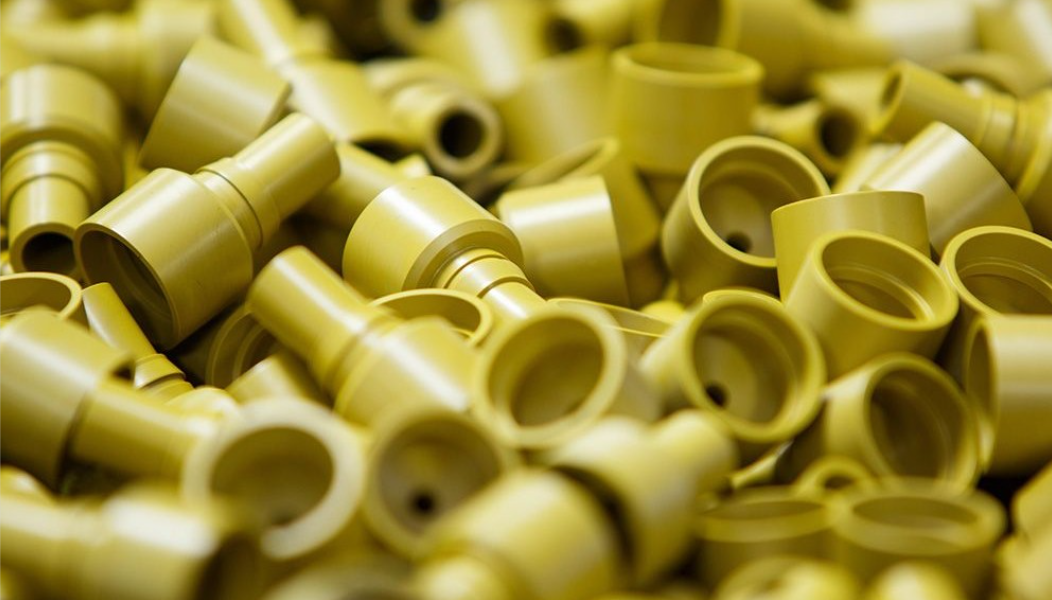Mold polishing is the process of polishing the cavity surface of the mold by using a whetstone, sandpaper, polishing paste, wool wheel, etc., to make the working surface of the mold bright. There are two main purposes of mold polishing, one is to increase the brightness of the plastic mold, one is to make the mold easy to demoulding. In ordinary industrial production, there are six polishing methods shown below:
- Mechanical polishing
Mechanical polishing is a method of polishing a smooth surface by removing the raised surface after polishing by cutting. Generally, tools such as whetstone strip, wool wheel, and sandpaper are mainly used and manual operation is carried out. Traditional polishing generally uses the rough whetstone first to the mechanical processing mold surface rough polishing, then is the slightly fine whetstone and finally again carries on the polishing with the finest sandpaper to obtain the bright finished product. Special parts such as circular surfaces can use a turntable and other auxiliary tools, the surface quality requirements can be used in the ultra-fine polishing method. Ultra-fine grinding and polishing is the use of special grinding tools in the grinding and polishing liquid containing abrasive, compact workpieces is processed on the surface for a high-speed rotation movement. The surface roughness of Ra0.008 m can be achieved with this technique, which is the highest among all polishing methods. This method is often used in optical lens molds.
- Chemical polishing
Chemical polishing is a process in which a material is dissolved in a chemical medium to form a smooth surface. The main advantage of this method is that it does not need complex equipment. It can polish workpieces with complex shapes, and many workpieces can be polished at the same time, with high efficiency. The surface roughness obtained by chemical polishing is generally 10 m. The preparation of polishing fluid is the key problem of chemical polishing.
- Electrolytic polishing
Similar to chemical polishing, electrolytic polishing depends on the surface of the solution being raised to make the surface smooth. Compared with chemical polishing, the effect of cathode reactions can be eliminated. The electrochemical polishing process can be divided into dissolved material to the electrolyte diffusion, material surface geometry rough drop, Ra>1 m; Low light leveling anodic polarization, surface brightness increased, Ra<1 m.
- Ultrasonic polishing
The workpiece is placed in the suspension of the abrasive and placed in the ultrasonic field. Ultrasonic machining will not cause the workpiece deformation, but it is difficult to make and install the tooling. Ultrasonic processing can be combined with chemical or electrochemical methods on the basis of solution corrosion, electrolysis, and then apply ultrasonic vibration stirring solution, so that the workpiece surface from the dissolved products, corrosion near the surface or electrolyte uniform; Ultrasonic cavitation in the liquid can also inhibit the corrosion process and conducive to surface lighting.
- Fluid polishing
Fluid polishing relies on high-speed liquid and abrasive particles carried by the liquid to wash the surface of the workpiece to achieve the purpose of polishing. Common methods are abrasive jet processing, liquid jet processing, hydrodynamic grinding, etc. The liquid medium is mainly made by adding abrasive (sic powder) and special compound (polymer substance) with good flowability under low pressure.
- Magnetic grinding and polishing
It uses magnetic abrasive in the magnetic field under the action of the formation of an abrasive brush on the workpiece grinding. This method has the advantages of high processing efficiency, good quality, and easy control of processing conditions. The surface roughness can be up to 0.1 m with a suitable abrasive.
Polishing is one of the most important processes in die-making. The surface roughness of plastic products and surface polishing quality requirements are increasingly high, polishing not only increases the beauty of the workpiece but also can improve the corrosion resistance of the material surface, wear resistance, also facilitate the later injection processing such as plastic products easy to demold and reduce the production of the injection cycle.





